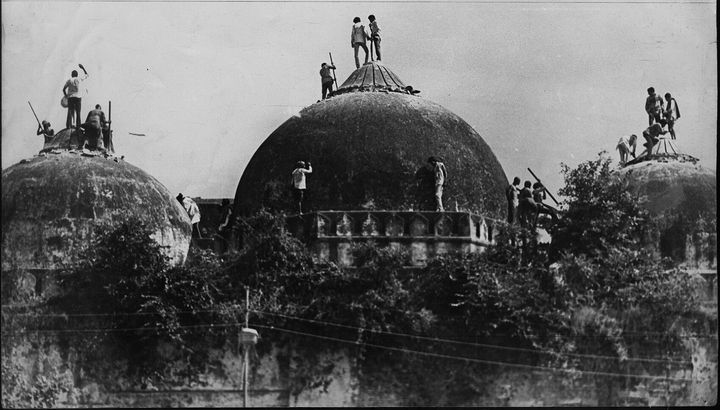
NEW DELHI — The acquittal of 32 accused in the Babri mosque demolition case by a special CBI court on Wednesday runs contrary to the findings of Justice MS Liberhan Commission, which had termed the bringing down of the structure a result of “great painstaking preparation and pre-planning”.
The Commission had rejected the theory that it was a spontaneous act by karsevaks whereas the CBI court has ruled that there was no evidence that demolition was a conspiracy.
The one-man commission of a sitting judge Liberhan was set up on December 16, 1992 to “ascertain only the events, facts and circumstances leading up to the demolition of the structure at Ayodhya and certain connected matters”.
The panel had submitted its report 17 years later after examining over 100 witnesses.
In its report, the commission had blamed the Sangh Pariwar and the RSS of financing and executing the demolition of the disputed structure.
“The theory or the claim made by the leaders of the movement or the icons, from political or social organisations, does not carry conviction to conclude that the demolition was carried out by the karsevaks spontaneously out of sheer anger or emotions,” Liberhan had concluded.
The report said the mode of assault, the small number of karsevaks who carried out the demolition and the constraints of the space to accommodate the number of people, veiling of the identity of the karsevaks entering the domes, the removal of the idols and the cash box from under the dome and the subsequent reinstallation in the makeshift temple, among other things, categorically lead to the conclusion that the demolition was carried out with great painstaking preparation and preplanning.
“The involvement of quite a number of karsevaks for carrying out the demolition ordinarily could not have been kept secret from people like the chief minister who admittedly has a number of sources of information; or from KS Sudershan who was heading the RSS while their swayamsewaks were detailed on the spot for each and every act required to be carried out; or local leaders like Vinay Katiyar or Ashok Singhal or the persons present at the spot prior to December 6, 1992,” the report had said.
The Commission had concluded that rallies and the rath yatra were “aimed at the emotionally charged common man and to make him a part of the demand for the temple at Ayodhya”.
“These measures did not succeed until the BJP joined in,” the report had said.
It said the mobilisation required logistical support for accommodating the incoming masses in tents and other shelters, providing foods and other necessities for their boarding and lodging.
“Facilities had to be provided not only for the karsevaks, but also for their leaders. As observed earlier, to sustain the frenzy of the karsevaks it was necessary to make arrangements for crowds and the many impromptu rallies. It was sustained and further hyped up by the daily public meetings held at the Ram Katha Kunj since December 1, 1992,” it said.
The commission, which continued its work during Atal Bihari Vajpayee-led NDA government, said it was evident that in order to support the prerequisites for such a movement, the finances required were channelled from the coffers of the various Sangh Parivar organisations through various banks to accounts held in the names of various organisations and individuals.
One of the longest running inquiry commissions, it was supposed to submit its findings within three months but took 17 years with 48 extensions spending about Rs 8 crore on salaries and perks of support staff.
The Commission submitted its report to the then Prime Minister Manmohan Singh on June 30, 2009.
The special CBI court in Lucknow acquitted all the accused in the case, including BJP leaders LK Advani, Murli Manohar Joshi and Uma Bharti, in the absence of conclusive proof to suggest a criminal conspiracy.